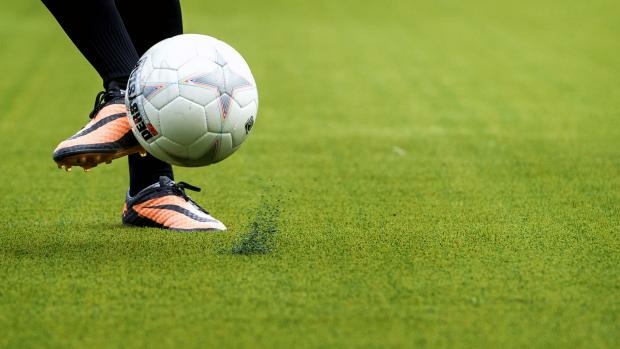Studying at TU Delft learned me to apply sustainability in all the projects I am doing. One of the things that I realised along the way is that there is still a lot to improve in the products I use everyday and the lifestyle I have. It feels strange to be motivating other people to live more sustainable without applying it in my own context as well. In my home situation this results in separating waste, reducing packaging materials by going to the market and bringing my own bags and eating vegetarian food. In my spare time I play football with an amazing group of girls. Apart from doing a sports I like a lot a great advantage is that I get to be outside at least three times a week for quiet some time. Normally at the TU Delft sport centre we play at artificial grass. When playing an out match we also play on normal gras sometimes.
Last Saturday our out match was cancelled because of the big amount of rain because we would have had to play on natural grass. This made me think about the way the fields are build up and what is more beneficial on a sustainable point of view: having artificial gras or normal grass. Since there are a lot of football fields in the Netherlands it might have a big impact on sustainability.
Apparently there are about 40 kinds of artificial grass. Each specific sport requires its own kind of artificial grass and also within these sports there are different types available. The artificial grass of the TU consists of small rubber like balls with plastic grass sprouts in between. I think that the little balls are there to mimic the damping of the normal ground. The problem is nonetheless that these little balls are taken everywhere. They are all around the football field but we also take them at home. They get stuck in our clothes and shoes and because of that they end up in our washing machines. Something that is presumably not very good if they get stock internally in your machine.
The reason that most football fields prefer artificial grass is because it is very hard to maintain a natural field when it is used everyday. Having the smooth field everybody wants with natural grass will only be possible at the beginning of the season unfortunately. By playing on a field it is used very thoroughly which makes it very hard for the grass to grow. To keep a grass like plant healthy it is important to keep the nutrients in the earth. When using natural grass on the field it needs to be fertilised either with normal fertiliser or artificial fertiliser regularly. This results in disturbing the local ecosystem. The question though is does this weigh stronger than bringing possibly damaging materials into the world. In 2012 a local party in Den Bosch (De Bossche Groenen) pointed out that the use of a special kind of rubber grains was damaging to the environment. This was because they were made from old tires. When they got warm they would dissolve a little and bring vapours into the atmosphere. Thereby because of carrying around (by the sporters) they got spread and even got in the ground water.
Hearing this makes me think about the field I play on every week. I do prefer playing on an artificial field from a technical point of view (less wobbly so easier to control the bal and less exhausting for my legs). But if it is really that bad I will do my best to appreciate natural grass a little more. Luckily there is also a solution for the damaging grains. The best would still be having natural grass. At this moment a lot of new grasses are being developed especially for football fields, next to that there are also less damaging grains available. Hopefully the TU also uses the less damaging kind of grains, at least an interesting fact to find out in the coming weeks, and if not; improvements possible for the TU Delft to also carry out sustainability on the sports fields. And since the whole world of football is very conservative in the Netherlands, it would be very nice if the TU Delft would be able to set an example.
